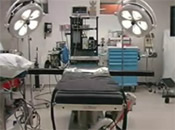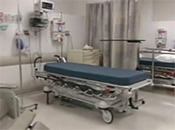Betahistine online order
Classification and stages of development of benign paroxysmal positional vertigo. Based on the pathophysiological mechanism, BPPV can be divided into two types. Canalithiasis - when the otoconia are located inside the semicircular canal. When moving, they cause dizziness. Cupulolithiasis - when otolith crystals are attached to the cupula, creating additional pressure on the receptors. When turning, they cause an attack. Canalolithiasis of the posterior canal is the most common type of lesion. Mainly affects the right side of betahistine pills of the vestibular apparatus.
Accompanied by repeated attacks of dizziness within a minute, which occur in a lying position or when turning the body on the back. Canalolithiasis of the horizontal canal - occurs when otoconia enters the horizontal canals. It is checked by turning the head like a barbecue, that is, in a circle. Occurs when the head turns sharply or when the body moves from side to side. Cupulolithiasis of the horizontal semicircular canal is caused by otoconia crystals falling on the cupula of the canal. Pseudospontaneous nystagmus is noted, which is not associated with a change in head position. Probable BPPV, spontaneously resolved - when the dizziness resolved before coming to the doctor, but based on the patient's story it is possible to diagnose BPPV. During diagnosis, nystagmus and positional vertigo do not occur.
Order betahistine 16mg generic
Canalolithiasis of the anterior canal is much less common than other types of dizziness. It can be diagnosed only after excluding diseases of the central nervous system. Cupulolithiasis of the posterior semicircular canal is detected quite rarely. Dizziness may occur when a person bends their head forward to tie their shoes or wash their hair. The attack itself lasts less than a minute, but if the person has not changed the provocative position of the head, then the time of the attack increases. The same symptom is observed with cupulolithiasis of betahistine pills.
Lithiasis in multiple canals is a very complex variant of the disease, affecting up to 20% of patients with BPPV. May be a complication of therapeutic maneuvers. Sometimes requires hospital treatment. Possible BPPV is more likely a concomitant condition. It is noted when other causes of positional vertigo have been excluded, and the described attacks do not meet the criteria for BPPV. The type of BPPV depends on how it is treated.
Generic Pills Online

The main complications and discomfort with BPPV are associated with the vestibular system. Autonomic disorders such as sweating and tachycardia are often observed.
Rare variants of BPPV (they can be confused with central positional vertigo). Complications of benign paroxysmal positional vertigo. BPPV itself has a favorable course, but if an attack of systemic dizziness occurs when a person is at great heights, depths, or while driving, then it can be dangerous. For example, such dizziness can cause a fall and injury.

Patients experience prolonged minor instability both after an attack and after successful treatment.
Multichannel BPPV is one of the most severe complications. It can develop either after a head injury or after repositioning techniques—removal of otoliths and their particles from the canals. Crystals fall not only into the affected channel, but also into neighboring ones. This leads to buy betahistine online irritation of the vestibular apparatus.


